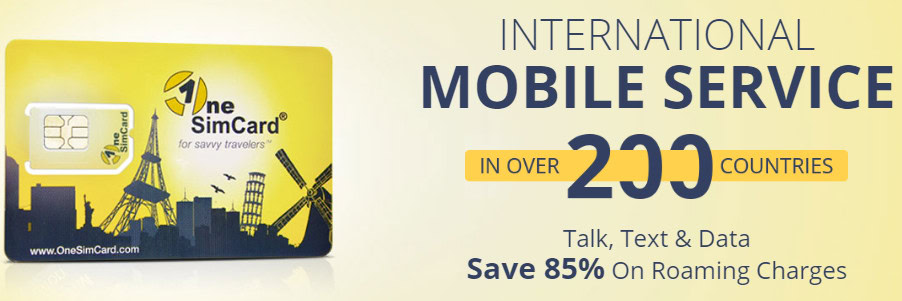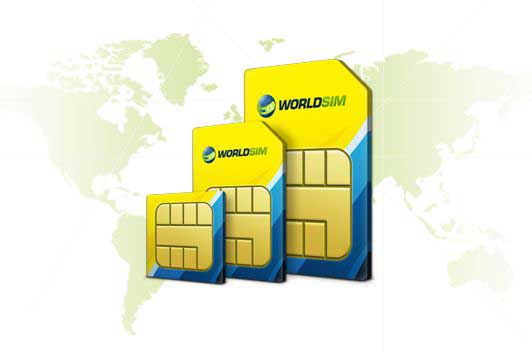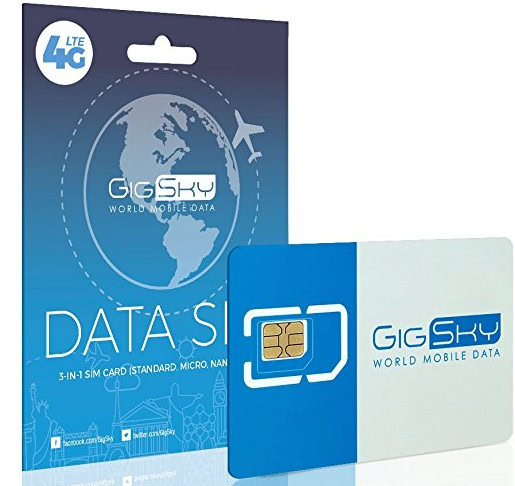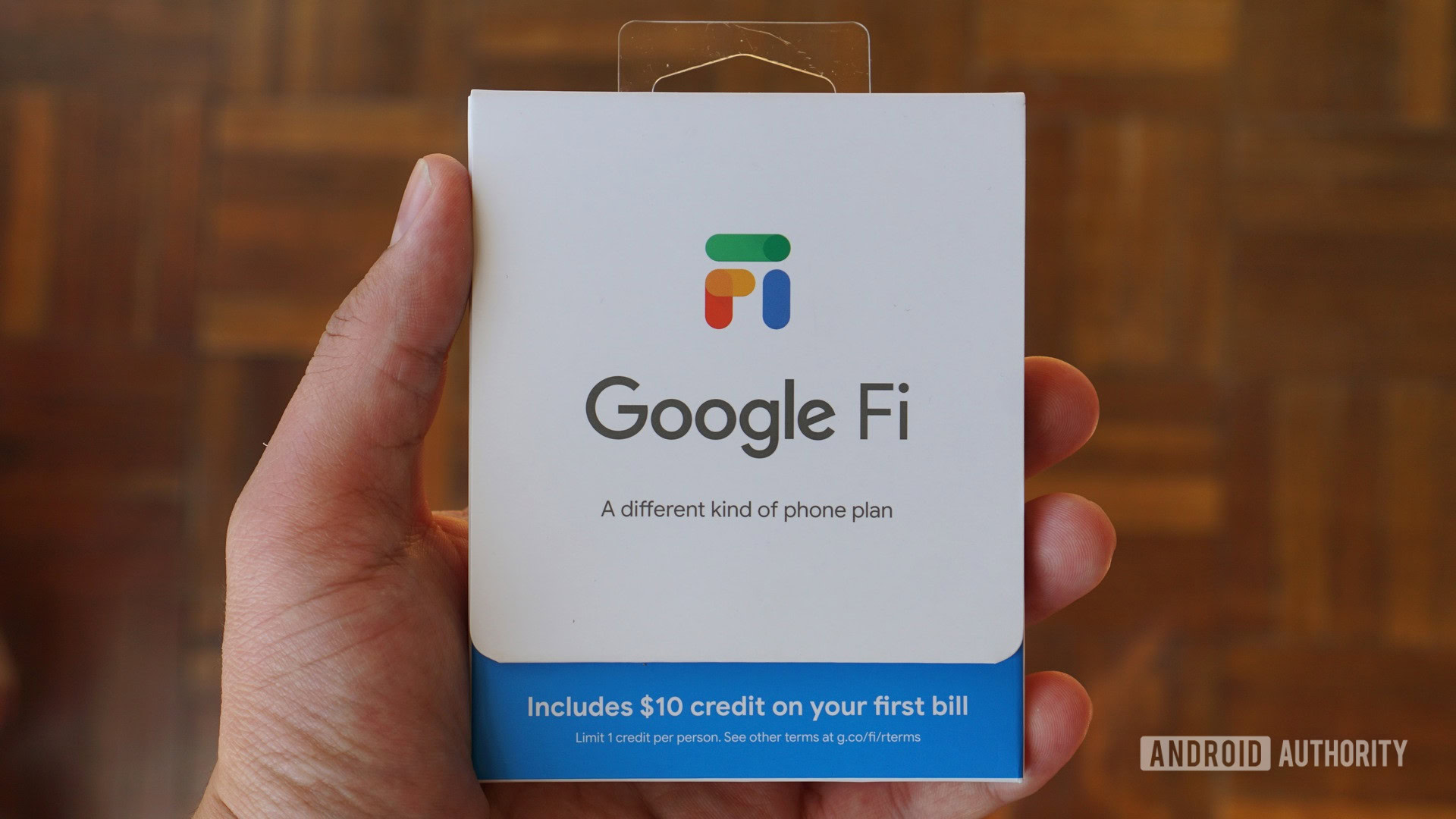Affiliate links on Android Authority may earn us a commission. Learn more.
Travel SIM cards: What you need to know when leaving the US for travel abroad
Published onMay 15, 2021

Gearing up for a trip abroad once the coronavirus pandemic has passed? You’ll certainly want to stay connected to family and friends while you travel. This might take one or more travel SIM cards, or you’ll want to check in with your US-based carrier before you head out to ensure you won’t face any connection issues.
Whether you plan to use Google Maps for navigation, other apps stay in touch with friends and family, or if you absolutely need to upload that gorgeous picture of the sunset on the beach to Instagram, it’s never been more important to have an active mobile connection when traveling.
Everyone knows that international roaming charges for calls and data, in particular, are costly and definitely not worth the hassle. Luckily, relatively affordable alternatives are available in travel SIM cards, international roaming packs for your network carrier, or by exploring local options. Here’s everything you need to know!
Before you go

There are a few things to keep in mind before you leave on your travel adventure. The first is that if you plan to use travel SIM cards on your trip, you’ll need an unlocked device to do so. If your current smartphone is locked to your carrier’s network and you don’t have a backup, you can always grab a solid Android device on the cheap.
See also: The best phones under $300
For your carrier-locked phone, you’ll either need to unlock it or opt for an international plan offered by your carrier (and not use travel SIM cards). Every network in the US has a device unlock policy with various eligibility requirements, such as a minimum number of days on the network, no unpaid bills, etc. The unlocking process has become quicker and easier over the years. Still, you should definitely start the process as soon as possible, as it could take weeks before your device is officially unlocked.
You'll need an unlocked phone to use different SIM cards abroad. If not, you'll need an international plan from your carrier or you'll need to buy a second phone.
If you can’t or don’t want to unlock your phone, you will be stuck with just two options: pay for an international plan through your carrier (if available), or buy a second phone.
Whether you get your current phone unlocked or buy a second phone, the phone you’ll use with your travel SIM cards will need to be GSM-compatible. There are two types of mobile networks in the US — CDMA and GSM. The former is used by Verizon, while AT&T and T-Mobile use the latter. The rest of the world almost exclusively uses GSM networks, so you’ll need a GSM phone once you leave the country. Most modern CDMA devices are also GSM-compatible, but you should double-check before you leave for your trip.
This is especially important if you plan to go the local SIM card route, which is generally the best and most affordable option. WillMyPhoneWork remains a useful resource to check if your phone is GSM-ready, though it hasn’t been updated in about a year.
The best international travel SIM cards
OneSIMCard

OneSIMCard has three travel SIM cards available – Universal, Expedition, and Europe & More. Outgoing calls start at $0.25 per minute, while data costs as low as $0.01 per MB with bi-weekly and monthly packages available. However, pricing depends on where you’re traveling to, so check the rates before purchasing as they can become quite expensive.
All the company’s SIM cards include a free $10 balance for talk, text, and data. However, you’ll need to pay for the card itself as well as for shipping if your total order doesn’t exceed $50. All the SIM cards come in three sizes — mini, micro, and nano — so it is practically guaranteed to fit your GSM-compatible phone. Each SIM comes with two numbers: A primary European number and a secondary US, Canada, or Australia number.
The Universal SIM card is priced at $29.95, with a usual price of $39.95. The Universal SIM card gets you covered in over 200 countries with 4G speeds in over 50 of those countries. This is the best option if you travel a lot from one country to another or want the top speeds available.
If you’re traveling to the old continent, the OneSimCard Europe & More might be a better option. What makes it different from the Universal SIM card is that it only works in 70 countries and won’t get 4G speeds. The card itself is cheaper, though, at just $19.95.
Finally, the Expedition SIM card gets you covered in over 200 countries but not at 4G speeds. This card is better suited for tablets, laptops, or other non-smartphone devices, as the Universal SIM will be better overall for smartphones.
WorldSIM

WorldSIM’s business model is slightly different from OneSIMCard. You can pre-load the card with either $27, $41, $68, or $135 of credit, which you can spend on calls, text, and data. Your credit is valid for one year. However, keep in mind that only the highest credit option gets you the SIM card for free.
As with the Universal card from OneSIMCard, WorldSIM travel SIM cards work in more than 100 countries and offer 4G speeds in some areas. It comes with two free numbers (one for the UK and one for the US), and you can also add your personal number or a local number as well.
Prices for calls, data, and text vary depending on the country you are in and the country you are contacting. Check out all prices here.
Instead of paying for data as you go, you can add data bundles to the SIM card (up to 4GB), which are valid for a period of 30 days. This might be a cheaper option if you plan to use a lot of data. Again, the price does vary significantly, so make sure you check the rates here. And once you run out of credits, you can add more via your credit card or PayPal account.
GigSky SIM card

Unlike the travel SIM cards mentioned so far, GigSky’s is only good for accessing the web. That means you won’t be able to make calls or send messages unless you do so via VOIP apps like Whatsapp or Facebook Messenger. The card retails for $10 and is easy to set up: Insert it into your device, download the GigSky app to configure and activate it, and then purchase a data plan.
Pricing depends on the destination: in Europe, Asia, Australia, Latin America, and North America, you can get up to 5GB of data for 30 days for $50. However, in the Middle East or Africa, you only get 1GB of data for the same price. You can check out all the plans and prices here.
Best international phone plans
Google Fi

Google Fi is a great carrier, especially if you want to bring your own device. One of the best things about Fi? Its international rates. Simply put, Fi offers flat-rate data no matter which country you travel to, as long as that country is on Fi’s supported list of over 200 countries.
That means you’ll pay $10 per gigabyte regardless of where you go. Your phone calls are also automatically included, priced at $0.20 per minute, while texting is free. For more details on Fi, you’ll want to head here. If you sign up for the Unlimited Plus plan, Google Fi will bundle most of your international service at no extra charge.
Verizon

Big Red’s Start Unlimited, Do / Play More Unlimited, and Get More Unlimited plans include unlimited talk, text, and data in Mexico and Canada. However, data is throttled to 2G speeds after downloading 512MB in a given day. If you travel to a country other than Mexico or Canada, you will need to pay roaming charges.
To avoid those roaming charges, Verizon offers an option called TravelPass. It costs $10 per day for those heading to one of the 185 countries you can check out here. Talk, text, and data are based on your domestic plan’s allowance, but the speeds get throttled to 2G after the first 512MB each day.
There are also a few monthly plans available starting at $100 per device for those traveling overseas — see more details here.
AT&T

If you’re on one of AT&T’s Unlimited Starter, Unlimited Extra, or Unlimited Elite plans, you can already call, text, and use data in Canada and Mexico without additional charges. If you’re not, or plan on traveling to a different country, you have two options available.
The first is the International Day Pass. It lets you make calls, send texts, and use data in over 100 countries for $10 per day per device. The second is called Passport and offers 2GB of data and free texting for $70 and up to 6GB of data for $140 per month per device. The plan is valid for 30 days and available in 200 countries. You’ll still need to pay extra to make calls, though, charged at $0.35 per minute.
Be careful with the Passport plan. If you go over your data limit, AT&T will charge you a whopping $30 overage fee for each GB of data you use after your limit. Ouch.
T-Mobile

T-Mobile offers anyone subscribed to the T-Mobile Essentials, Magenta, and Magenta Max plans unlimited texting in more than 210 countries. You still need to pay for calls, which will set you back $0.25 per minute. You’ll also only get data included on Magenta and Magenta Max. Unfortunately, there’s a 128kbps cap for the download speed with the Magenta plan and 256Kbps for Magenta Max. That’s nowhere close to the high-speed LTE you enjoy at home.
Customers with qualifying plans can also buy an International Pass for $5 per day that will allow for LTE speeds for up to 512MB per day, as well as unlimited calling.
Look for local options when going abroad

International travel SIMs and carrier roaming plans are worth considering. However, that is mostly because you can set them up before you go on vacation. However, you can also get a prepaid SIM card from a local network carrier in the place you’re visiting. This will almost always offer more bang for the buck.
If you’re vacationing in Italy, for example, you could opt for a travel SIM card sold by the Italian carrier TIM. It offers 15GB of data and 200 minutes of national and international calls for 20 euros (~$23) per month, which is a fantastic deal. You can find similar tourist-specific SIM cards from a lot of networks in most countries. All you need is your passport to sign up for most of these plans. If a tourist-only plan isn’t available, subscribe to its standard prepaid plans, which might be even cheaper.
If you're going to be in one place for a while, the local carriers will likely offer the best deals.
What is important here is to do the research beforehand. You can find out which local networks offer the best tourist-friendly prepaid plans. Make sure that its coverage is good if you plan to be on the road a lot. It’s also important to know how easy it will be to pick up a SIM card.
A Google search will tell you whether the arrival airport has kiosks after you land. You can also order a SIM card online and have it shipped to your hotel. Renting a car at the airport? Stop by a local carrier store once you get out of the airport.
International SIM cards are useful. Having an international roaming pack from your carrier is great for a day or two. However, getting a pre-paid SIM card from a local network while abroad will often yield the best deals. Do as much research as possible so you can get a SIM quickly.
See also: The best travel apps for Android
Have some interesting out-of-the-box ideas about getting a SIM card while traveling? Hit up the comments below and give us your best tips!